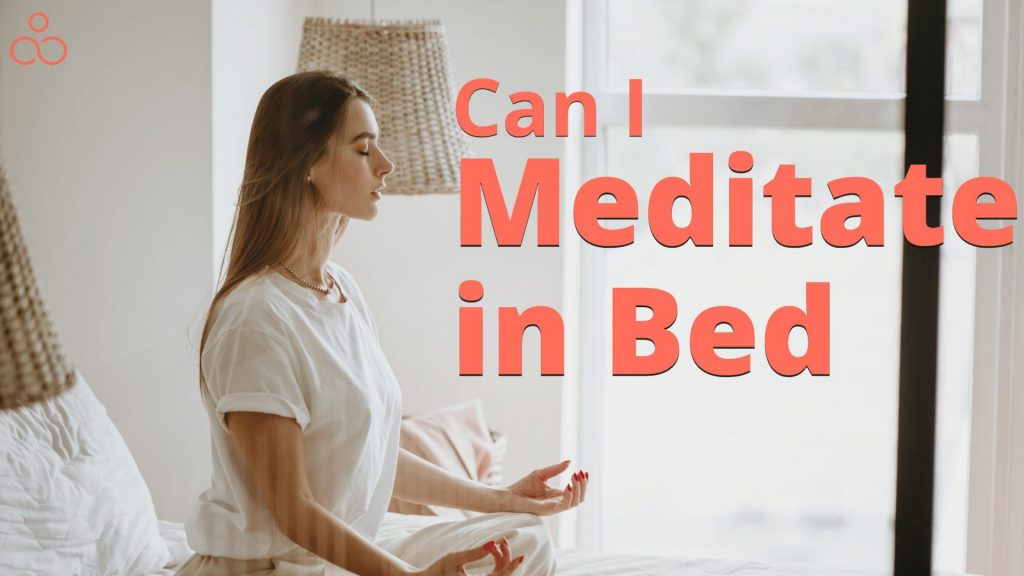Meditation has long been touted as a powerful tool for calming the mind, reducing stress, and improving overall well-being.
But if you’re pondering “Can I meditate in bed,” “Can I meditate lying in bed,” or “Can I meditate sitting in bed,” then you’re in the right place.
Here, in this article, we’ll explore various types (techniques) of meditation, and yoga poses to do before bed, and also discuss the pros & cons of meditating in bed, diet practices, common mistakes to avoid while meditating, and provide helpful tips, and many more.
So, look no further and keep reading to find out…
First of all, let’s understand “what is meditation?”
Meditation is a set of techniques designed to encourage heightened awareness and focused attention. Through its consciousness-changing features, it has been proven to have many positive effects on mental health.
Some important facts about meditation:
- It has been practiced in many cultures around the world for thousands of years.
- Most major religions, including Buddhism, Hinduism, Christianity, Judaism, and Islam, have traditions utilizing meditation.
- Though often used for religious purposes, many people practice meditation independently of any religious or spiritual beliefs/practices.
- Meditation can also be used as a psychotherapeutic technique.
Types of Meditation
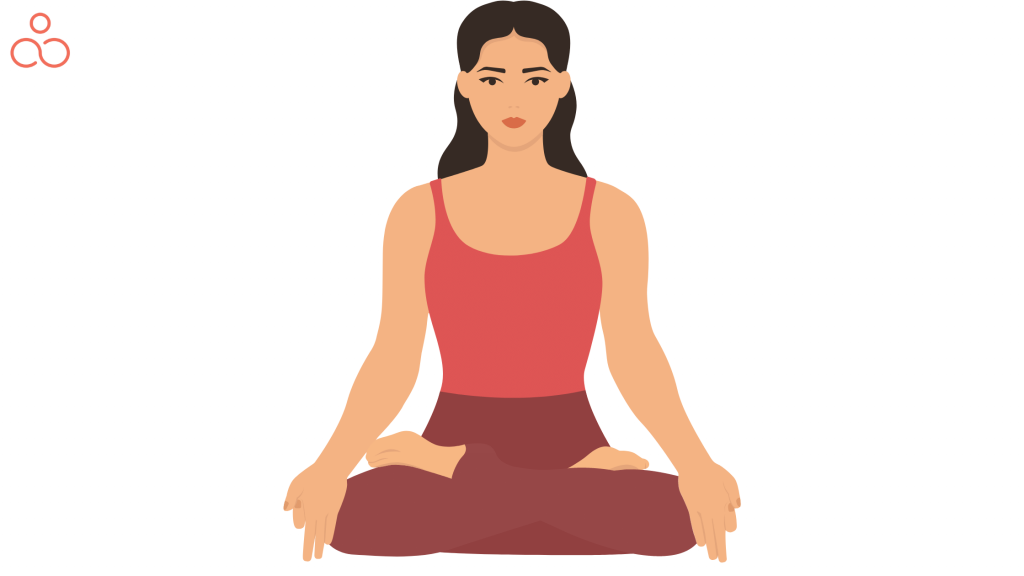
Here are 8 recommended meditation types (techniques) with scientifically-proven health benefits that you can practice during the day – before bed, or even while lying in bed to help you relax and fall asleep.
1. Mindfulness Meditation
When you practice mindfulness meditation, the goal is to stay in the present moment, blocking out external distractions and worries. To get started, here’s what you need to do:
- Find a comfortable, safe spot to sit in.
- Set a time limit for your meditation; 10 minutes works, especially when you’re just getting started.
- Sit in a way that allows you to remain steady and still – think sitting cross-legged, kneeling, etc.
- Focus on your breath, and pay attention to each inhalation and exhalation.
- Understand that your mind may wander – if it does, just bring your attention back to your breathing.
- Be gentle with yourself; don’t beat yourself up if your mind wanders; just come back to your breathing.
A study shows that mindfulness meditation improves the quality of life and reduces pain and symptoms of depression.
2. Spiritual Meditation
Spiritual meditation is a practice that spans virtually all religions and spiritual traditions.
The types of spiritual meditation vary widely, and many of the meditation techniques mentioned in this article can be considered spiritual meditation.
According to a 2017 study, spiritual meditation is centered around developing an understanding of the spiritual or religious meaning and forming a bond with a higher power.
Some examples of spiritual meditation include:
- Sufi dhikr (remembrance of God)
- Christian contemplative prayer
- Jewish kabbalistic practices
Spiritual meditation can be done in the home or in a place of worship. It is highly beneficial for people who seek a deeper religious or spiritual connection with a higher power.
3. Progressive Muscle Relaxation (PMR)
When you feel stressed, it can manifest in physical tension in your body. PMR is an effective relaxation technique allowing you to release this tension; it works when you focus and relax one muscle group at a time. Here’s what you need to do:
- Progress through your entire body.
- Start at your forehead, then move to your jaw, shoulders, and so on.
- Inhale deeply, and then deliberately tense one muscle group as hard as you can. You may feel shaking or discomfort, but it shouldn’t be painful.
- As you exhale, quickly and completely let go of the tensed muscle group.
- Allow yourself to relax for about 30 seconds.
- Repeat this process for each muscle group, working your way down the body and paying attention to your breathing.
Progressive relaxation can help you feel relaxed and calm, and may even help to reduce chronic pain. This type of meditation works gradually and steadily to relax your body, making it a popular choice for those looking to get a better night’s sleep.
4. Body scan meditation
If you’re looking for a way to relax and let go of stress, body scan meditation is an excellent option. The practice involves doing a mental “scan” of your body, one body part at a time. You simply pay attention to the bodily sensations as you move from your head to your feet.
- To start, find a comfortable position, preferably lying down.
- Focus on your breathing, and try to make it slow and steady.
- Bring your attention to the first body part and take note of any pain or sensations you feel. Remain focused on your breathing.
- As you go through the body scan, imagine the tension in your body slowly dissipating.
- Continue the scan slowly, and systematically, working your way down to your toes.
5. Guided Meditation
Guided meditation is a practice that helps you relax and release stress through the guidance of an instructor. This can be an individual in person, or a pre-recorded audio or video played on your device.
- If using an app or recording, kindly turn off all other notifications or enable airplane mode on your phone, if possible.
- Look for a place where you can comfortably sit, kneel, or lie down. The aim is to relax without falling asleep.
- Close your eyes, breathe naturally, and let your guide take over from there.
6. Mantra-based meditation
Mantra-based meditation focuses on the constant repetition of specific syllables, phrases, or words, either verbally or mentally. This can be done with or without religious content. The technique is designed to replace and redirect negative thoughts.
A study conducted in 2022 showed that mantra-based meditation led to minor to moderate reductions in anxiety and minor decreases in depression. However, these results may be affected by biases in the study and the limited availability of research on this topic.
7. Transcendental meditation
Transcendental meditation is a spiritual practice in which individuals sit and breathe slowly with the objective of transcending their current state of being. During a session, practitioners concentrate on a mantra. While traditional methods involve a teacher determining the mantra based on numerous factors, contemporary practices may allow individuals to select their own mantra, such as “I am not afraid of public speaking.”
A 2014 clinical trial involving 40 teachers suggested that transcendental meditation could potentially decrease stress, burnout, and depression. However, more research is needed to confirm these findings.
8. Loving-kindness meditation
Loving-kindness meditation, also known as Metta meditation, is a practice that helps you foster a sense of connection with the rest of the world by embracing love and kindness for yourself and others.
- Start by repeating phrases to yourself such as: “May I find joy. May I be strong. May I stay safe. May I be at peace,” etc.
- Now focus on someone close to you, and repeat the same phrases to them. For example, “Let my mom experience joy. Let my mom enjoy good health,” etc.
- Repeat the same phrases to a person who is struggling or facing difficulty.
- Next, focus on someone you don’t really know, like a cashier at your local store or someone you see every day on your commute. Repeat the same phrases to them.
- Then, turn your attention to someone who you don’t especially like or who irritates you, and think of them while saying the phrases.
- Finally, remember everyone in the entire world when you say the phrases.
Can I meditate in bed? Step-by-step guide on How to meditate in bed
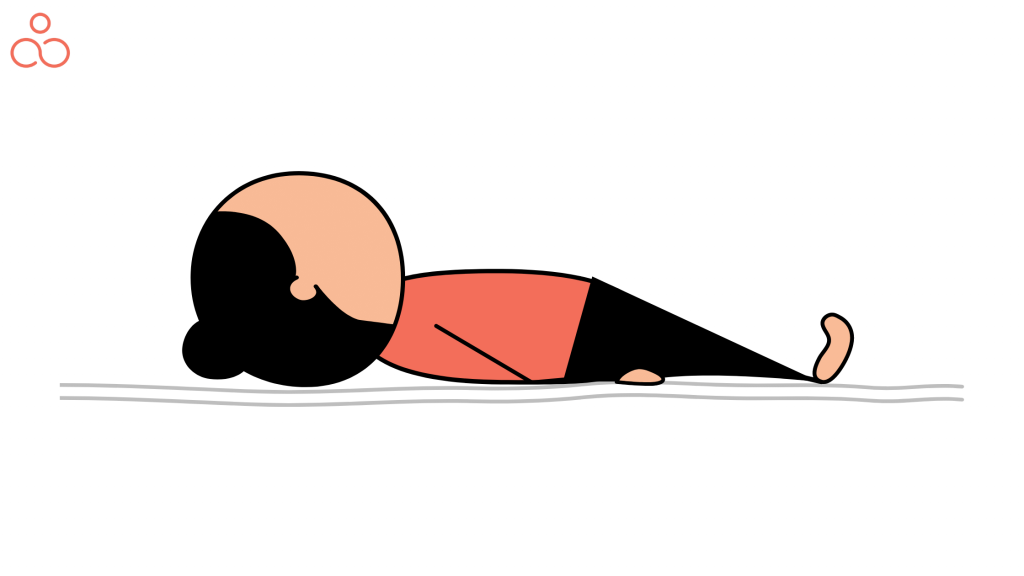
Meditating in bed can provide a refreshing and calming experience regardless of the time of day. To maximize the benefits of your meditation session in bed, follow this guide to set the right mood, position yourself correctly, concentrate, and relax.
- Set the Right Mood
To meditate in bed, it is important to create a relaxing and calming atmosphere. Dim the lights, light a candle, place some essential oils in an aromatherapy diffuser, switch off any phones or devices that may cause distraction, and play some calming music (or none at all).
- Lie on Your Back
This preferred position can help you stay in tune with your body and the environment around you. Keep your legs and arms uncrossed to ensure that your spine is straight and that your body is in its natural resting position.
- Focus
Once you are in a comfortable position, close your eyes and concentrate on the rhythm of your breathing. Take slow and deep breaths for a few minutes, bringing your awareness and concentration to the present moment.
- Breathe
As you continue to concentrate on your breath, observe your inhalations and exhalations without any judgment. To keep your attention focused, you can silently repeat a phrase that is meaningful to you, such as “I am at peace.”
- Relax
As you become more relaxed and comfortable, allow your body to let go, beginning with your toes and gradually moving up your body. Feel the tension dissipate, and any physical and mental stress fades away.
- Shut Down
Closing your eyes and keeping your concentration on your breath, focus on being in a peaceful and relaxed state. When your session is done, stretch your body and open your eyes. Before you get up, take a few moments to reflect on your experience.
Can I Meditate While Sleeping?
“Can one be meditative during sleep? According to Sadhguru, trying to introduce spirituality into your sleep will only result in a restless night. Meditation, he explains, is not something that you can just do, but if you incorporate its qualities into yourself, they will remain with you regardless of whether you’re awake or asleep.”
– By Sadhguru
Simply Sleep!
Simply sleeping can be a great meditative experience if you have the right mindset. It is all about letting go and allowing yourself to drift off into a calming dream world. Relaxation techniques and aromatherapy can increase the focus through this process. Plus, the more relaxed you are, the easier it will be to drift off into a deep and restful sleep.
Sleeping in Abandon
When we are sleeping, we often forget about our worries and anxieties due to the brain being in a state of rest. While in this state, it is easier to enter a meditative state. This can be achieved by concentrating on one’s breathing and allowing the body to completely relax.
The U.S. Republican presidential candidate, John McCain, expressed something quite eloquent regarding this matter. After he was defeated by Obama in the election, they asked him, “How are you?” to which he replied, “I’m sleeping like a baby. Every couple of hours, I wake up, weep, and then go right back to sleep again.” Such an uplifting and humorous result despite his defeat. Sleep without fret and in total abandon, or at least sleep like a contented little baby.
The Meditative Quality
Meditation is not an act; it is quality. It is a fragrance you arrive at and exudes in how you live. By investing time in nurturing your body, mind, energies, and emotions to achieve a specific level of maturity, you can successfully attain a meditative state. This will not automatically happen – you have to make an effort for it to occur.
When in a meditative state, the body is able to completely relax and become aware of the breath. This allows one to become aware of thoughts, sensations, and emotions without becoming distracted or overwhelmed by them. The mind can be much more still and open to the present moment. In this way, meditation can be found while sleeping too.
5 Yoga Poses To Practice Meditation in Bed
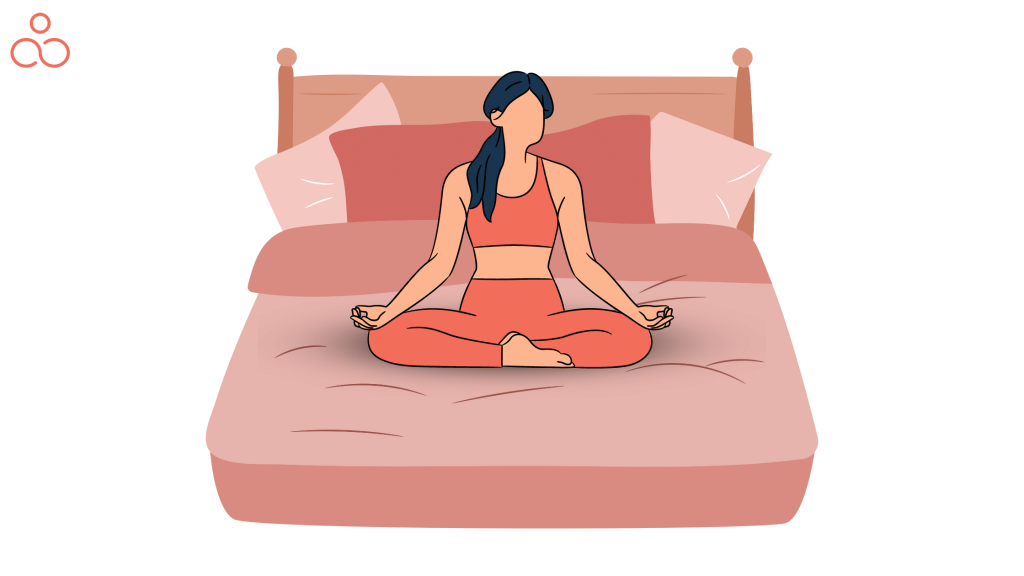
Meditating while in bed can be a great way to start and end your day. There are many different ways to meditate while in bed, each with its own benefits and advantages. Here are some of the 5 most well-known yoga postures for practicing meditation in bed:
This is the most common position used for meditation while in bed. It involves lying flat on your back with your feet apart and your arms by your sides. Make sure you are comfortable, and your wrists, shoulders, and neck are relaxed. Shut your eyes and focus on your breathing.
- Half-lotus position
This position is similar to the yoga position, but you will be positioning one foot on top of the other and making sure your spine remains erect. Once in place, move your focus back to your breath and bring your hands together in a prayer-like gesture.
- Sitting Up with Pillow
Sitting up with a pillow can help add comfort and support your lower back. You can sit cross-legged with your legs in a quadruple lotus position, or you can sit up against the wall and use the wall for extra support. This meditation position can help to open your chest and help you focus better.
- Sitting on the Edge of the Bed
This type of meditation is great for those who feel uncomfortable lying down. You can sit at the edge of the bed with your legs extended in front of you, your toes touching the floor, and your hands resting on your knees. Make sure that your back remains straight and allow your neck and head to relax.
- Reclining Back
Meditating in this position can help you feel relaxed and comfortable. Lie on your back and let your legs be naturally positioned in the bed. This allows your spine to be in a neutral position which helps to reduce tension in your body. Rest your hands on your stomach, and close your eyes, focusing on your breath.
The Benefits and Drawbacks of Meditating in Bed
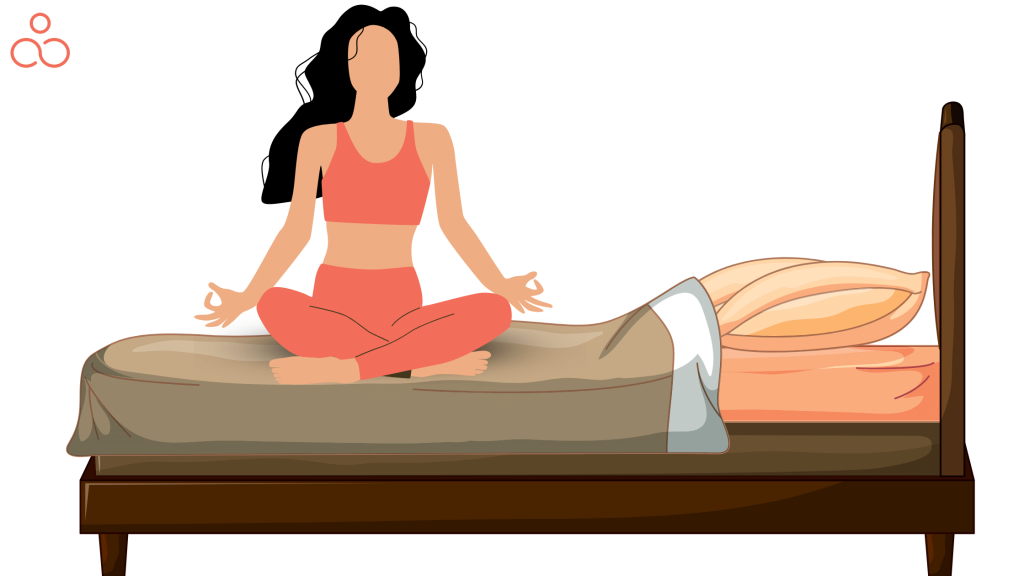
Meditating in bed has several immediate benefits, as well as some drawbacks. It’s important to consider both when deciding whether it’s a technique that can work for you. Here are six of the most important benefits and drawbacks of this type of meditation:
Benefits
Meditation comes with a long list of benefits. These include general health and mental/emotional advantages, such as:
- lower blood pressure
- reduced stress
- enhanced sleep quality
- increased emotional regulation
- increased focus
- better mood
- decreased aggression
- greater adaptability
- healthier aging
- higher levels of empathy and connection with others
A 2017 study suggested that non-transcendental meditation may be a beneficial way to lower systolic and diastolic blood pressure.
A 2018 review has revealed that meditation may have a positive effect on healthy aging.
Additionally, meditation may be able to reduce the symptoms of certain conditions, such as:
- Depression and anxiety disorders
- Cardiovascular diseases, such as arterial hypertension
- Dementia and Alzheimer’s disease
- Parkinson’s disease
- Insomnia
- Attention deficit hyperactivity disorder (ADHD)
- Chronic pain
A 2019 review demonstrated that mindfulness-based interventions can reduce cortisol levels in employees participating in workplace mindfulness programs.
Drawbacks
- Lack of environment: Being in bed can lead to a lack of focus and clarity due to a lack of environment.
- Lack of dedication: Meditation requires dedication and commitment, which could be compromised by sleeping in bed.
- Interruptions: Waking up in the middle of meditation can result in confusion and loss of focus.
- Lack of physical activity: Being in bed during meditation can lead to a lack of physical activity which is essential for good health.
- Uncomfortable: The bed is not the most comfortable place to meditate and can lead to a lower quality of meditation.
- Distractions: The environment of the bedroom can be a source of distractions, making it difficult to fully concentrate on meditation.
In a 2017 study conducted on 342 participants, the most common unwanted effects of meditation occurred at a rate of 4.2 to 4.6%. These unwanted effects included:
- feelings of being alienated from society
- trouble feeling comfortable in the world
- feeling that something is missing.
Most of these effects were mild and did not require discontinuing meditation. The effects appeared more frequently in people who practiced meditation more often and during individual sessions rather than group sessions.
The Ideal Time For Meditating in Bed – Morning vs Night
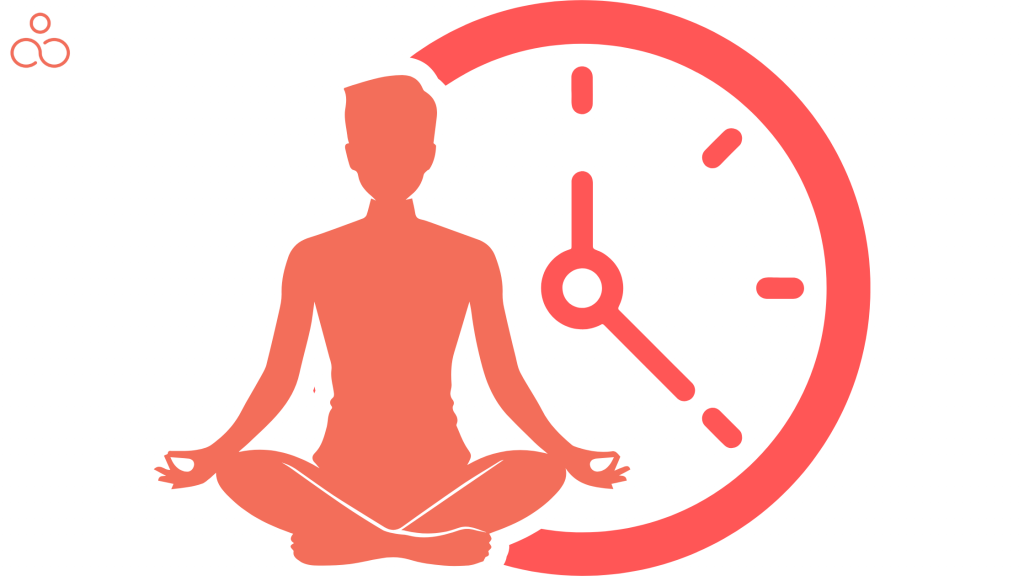
One of the most common questions beginners ask is what’s the best time to meditate.
A study by the University of Kentucky finds that morning meditation can decrease stress and anxiety during the day.
Alternatively, meditating at night can help clear your mind of any worries or lingering thoughts, leading to better sleep and a feeling of relaxation.
| Parameter | Morning Meditation | Night Meditation |
| Pros | Helps set a positive tone for the dayIncreases focus and clarity during daytime activitiesBoosts energy levelsEnhances decision-making abilities and self-awareness throughout the day | Promotes relaxation before sleepImproves sleep qualityReduces nighttime anxiety and stressSupports emotional processing and mental clarityMay be easier to establish as a routine without daytime interruptions |
| Cons | May be difficult for non-morning typesPotential distractions from morning routines or responsibilities | Tendency to fall asleep during meditationEvening schedules and social plans can lead to inconsistent meditation routines. |
It’s crucial to remember that the best time to meditate is when it fits into your own schedule. It depends on your lifestyle and what you wish to improve or build with your practice.
Diet Changes That Can Help Your Meditation in Bed
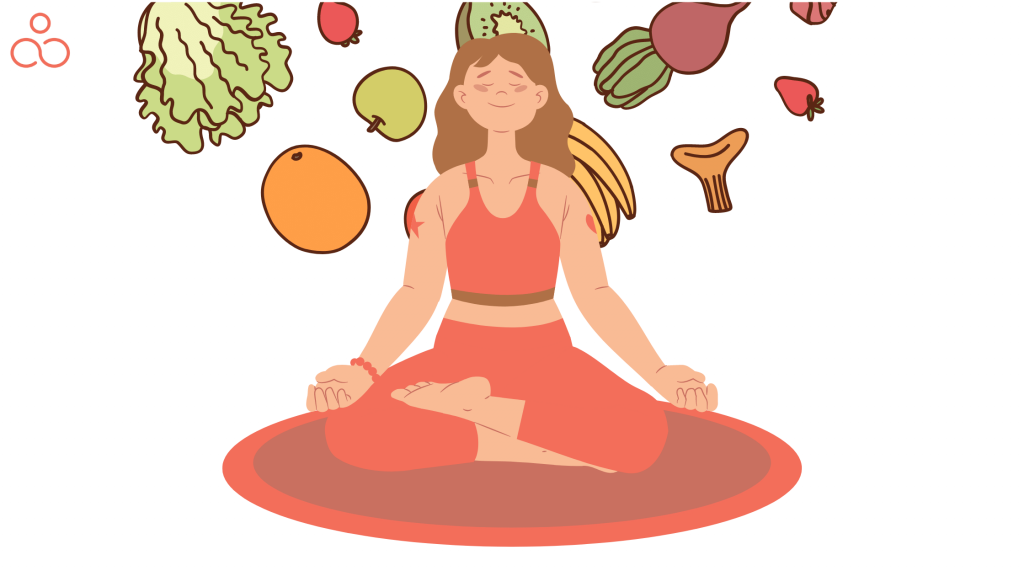
Eating the right food can help improve the quality of your meditation sessions in bed. Here are a few suggestions on what to eat and what to avoid if you want to optimize the time you spend meditating:
What to Eat
- Eat a balanced breakfast to kickstart your day
- Incorporate more veggies and fruits into your diet
- Eat meals that are rich in whole grains
- Drink plenty of water throughout the day
What to Avoid
- Avoid processed foods and food with added sugars
- Limit your caffeine intake to reduce the disruption in your meditation
- Avoid smoking and drinking alcohol
- Stay away from too many salty foods
Common Mistakes to Avoid When Meditating in Bed
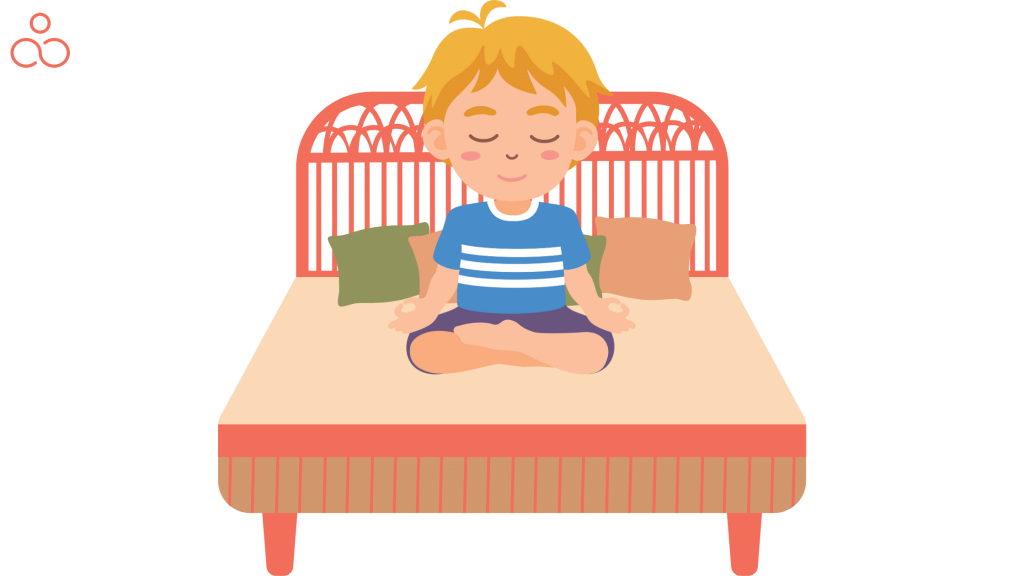
- Incorrect Breathing: When meditating in bed, it’s important to remember to breathe in and out slowly and deeply so that you’re really taking the time to relax.
- Overthinking: Don’t let your thoughts run away with you. Make sure to focus on the present and don’t fret about the future or dwell on the past.
- Fidgeting: Make sure to get comfortable before your meditation session, so you don’t have to move or adjust yourself while you’re in the middle of it.
- Listening To Music: While some types of music can be beneficial and help you relax, be careful not to pick something too energetic, or you may end up getting distracted.
- Falling Asleep: While it’s not impossible to meditate your way to sleep, it’s important to remember that it’s not the main purpose of meditating. So, try to stay conscious and fully present during your session.
- Trying too hard: Meditation is not about perfection or attaining any specific mindset. You should focus on the experience and be gentle with yourself.
Simple and Easy Tips to Meditate in Bed for Beginners
- Create a cozy and comfortable atmosphere in your bedroom.
- Take some deep breaths and find a comfortable position in bed.
- Start with a mini body scan from feet to head to become aware of how your body is feeling.
- Close your eyes and focus solely on your breath.
- Continue for 10 minutes or as long as desired.
- If thoughts come along, acknowledge them without attaching to them and gently go back to focusing on your breathing.
- When your meditation is done, take a moment to relax, and if possible, make a note of any insights or revelations that may have come up during your session.
FAQ’s
Can I meditate while lying in bed?
Yes, it is possible to meditate while lying in bed. The key is to be comfortable, relaxed, and focused on the task at hand. It can be helpful to use a pillow or cushion to provide extra support and comfort in this position. It is important to choose a comfortable position and keep in mind that the goal is to be still and relaxed. Remember to focus on the breath and relax your body as you meditate.
Can I meditate sitting in bed?
Yes, you can meditate while sitting in bed. The key is to sit in a comfortable and relaxed position, close your eyes, and focus on your breathing. To deepen your meditation practice, you can read a calming passage, focus on a phrase or mantra, or visualize a scene or place you find peaceful.
How should a beginner sit in meditation?
Get into the correct posture for seated meditation by following these simple tips: Gaze slightly downwards, 4 to 6 feet in front of you, or close your eyes. Tuck your chin for cervical spine alignment. Allow your spine to fall naturally in its curve – upright yet comfortable. Make sure your sitting bones are centered and stable – not too far forward, nor too far back.
How can I know if I am meditating?
As you drift into a deep meditation, your mind shifts away from time and space, your breaths become slower, and you forget about yourself. Now, when you gain consciousness again, peacefully and with no awareness of your body, it could be a sign that you’ve just meditated deeply.
Can I meditate with my eyes open?
Absolutely! Meditating with your eyes open is not only possible, but it can also be an enriching experience. It’s a matter of personal preference and comfort. Some people find open-eyed meditation helpful in staying focused and present during practice, while others prefer closed eyes. Choose the method that allows you to keep your awareness steady and relaxed.
Why do people practice mindfulness meditation?
According to a 2012 U.S. survey, 34,525 adults reported that 1.9% of them had practiced mindfulness meditation over the prior 12 months. Of these, 73% had done so to improve their well-being and guard against illnesses. Meanwhile, 92% said they used this practice to de-stress or find relaxation. And to sleep better – it was the motive cited in over half of the responses.
What to think about while meditating?
- Learn to take control of your breath
- Observe the physical sensations in your body and become conscious of them
- Use body sensations to stay mindful in the present moment
- Understand your emotions
- Recognize emotional triggers
- Cultivate compassion and forgiveness
- Prioritize values that guide you
Conclusion
Meditating isn’t always easy, especially if you’re trying for a deep meditation. It takes time, and finding a peaceful place to practice, especially when you’re in bed, can be challenging. But with practice, you can learn to find your center and drift off to a restful sleep. To help aid your relaxation, you can use mantras or try Pranayama and Square breathing.
All in all, you don’t have to suffer through a restless night. Restful sleep lies in the many calming tips and tricks you can practice. After all, getting quality sleep is necessary to be at your best.

